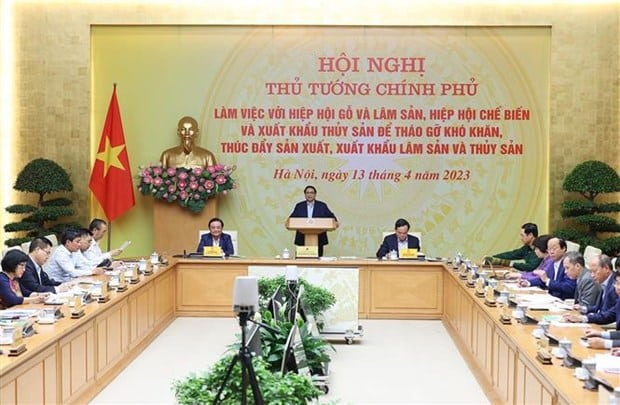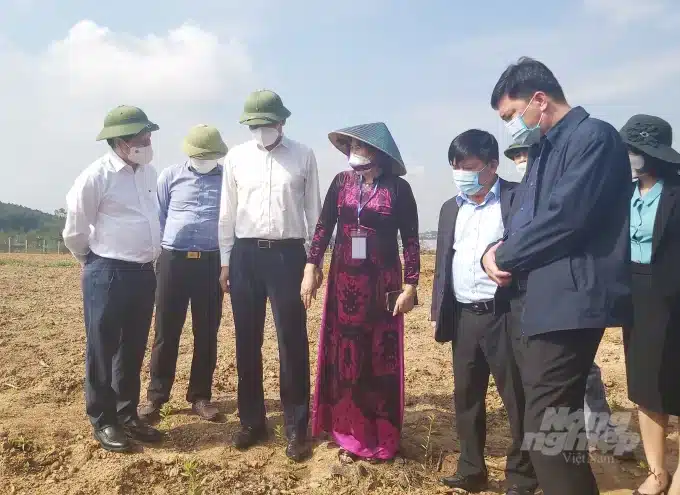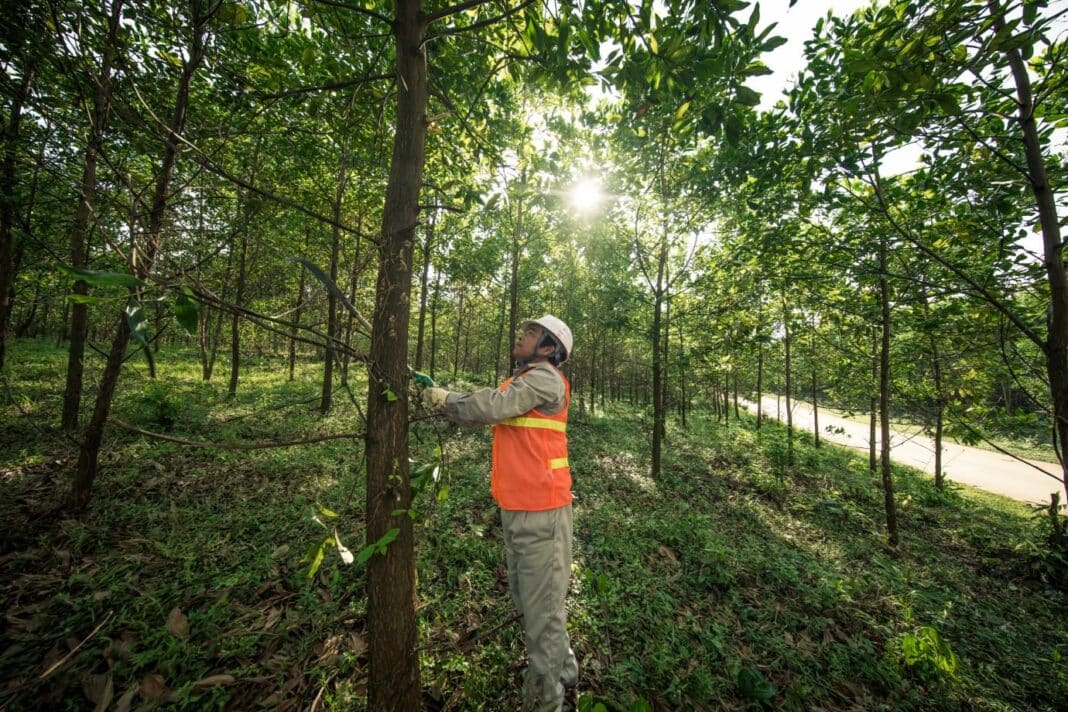Chairing a joint conference of the Vietnam Timber and Forest Product Association (VIFOREST) and the Vietnam Association of Seafood Exporters and Producers last week, Prime Minister Pham Minh Chinh highlighted the importance of improved competitiveness in processing, post-harvest, and market development in order to address a decline in forestry-fishery exports Vietnam Plus reports.
Highlighting the importance of forest and aquatic products to the national economy, PM Chinh added that attention must be paid to ensuring food safety, protecting the ecological environment, developing green, organic, and circular agriculture, shifting from agricultural production to agricultural economic development to meet market demand.

Ministry of Agriculture and Rural Development reports 28% drop in forestry exports for Q1 2023
The export of timber and forest products has until recently increased – estimated at 17.1 billion USD for 2022, up from 16.45 billion USD in 2021. For 2023 the government has set a target of 17.5 million USD, however the Ministry of Agriculture and Rural Development reported that exports dropped alarmingly in the first quarter of this year.
Vietnam News reported that forestry faces several challenges such as a dependence on imported raw materials, reduced demand (for certain forest products) and increased competitiveness in major markets including the United State, Europe, and Japan – which account for just under 90% of total exports for forest products.
Vietnam must remove obstacles to growth – invest in high-tech forestry parks
The PM has asked the Ministry of Industry and Trade to revise trade rules, prevent actions that could damage the reputation of Vietnam’s forestry and fishery sectors, and create better policies for market growth.
The Ministry of Planning and Investment is responsible for allocating funds for agricultural investments and supporting the growth of industrial and hi-tech forestry parks.
High-tech forestry parks have become a magnet for foreign investment, using state of the art technology to improve productivity, production and efficiency in the forest.

He also urged local governments to implement policies and incentives that encourage investment in industries related to aquatic, wood, and forest products.
Value-added forest products help elevate Vietnam economy
In a report published by the IMF yesterday, Vietnam is forecast to be the second best performed ASEAN economy for 2023 and will replace Philippines as the best performed economy in 2024.
Vietnam’s timber and forest products are exported to over 140 countries and territories with non-timber-based forest products (including bamboo, rubber, and grass products) identified as a major growth market.
According to Timber Trade Portal, just 30 percent of timber-related exports were the raw material itself.
This in turn is reflective of the country’s emergence as an international manufacturing powerhouse especially with western companies increasingly looking to decouple from China.
Foreign Direct Investment in Vietnam’s Forest Products Sector
Vietnam should be an attractive market for foreign direct investment, with Vietnam amongst the largest exporters, globally, of wood pellets, veneer sheets, and recovered paper, according to UN data.
However according to an ASEAN Briefing provided by professional services company Dezen Shira and Associates, there is a general perception that the timber industry is not overly profitable and could be negatively impacted by regulatory changes.
In the 2020 report, Dezan Shira & Associates reports that Vietnam’s producers struggle to have adequate infrastructure to meet domestic demand for timber.
With more than a quarter of the forests managed by smallholders, many landowners lack the money to invest in value-added processors and harvest the resource before it reaches a stage where it can be used in furniture production or other high-quality wood products.
Vietnam’s heavy reliance on imported raw materials
As a consequence, Vietnam has a heavy reliance on imported hardwoods, with 5 to 6 million cubic metres of imported from more than 100 countries every year.
Not only does this leave the country vulnerable to volatility in the global supply of timber but it also leaves it at greater risk of ‘high-risk’ legality concerns.
In 2020, US based Mongabay reported that at least one-third of tropical hardwoods imported for Vietnam manufactured products are from locations “high-risk” locations.
This can create complications as Vietnam navigates the EU’s Forest Law Enforcement Governance and Trade Action Plan (FLEGT Action Plan) and the US Lacey Act and secures favourable trade agreements with international markets.
In recent years, experts have pushed the government to focus on building the capacity of micro, small and medium sized enterprises (MSME’s) and domestic plantations, most of which are operated by smallholders.
Vietnam produces more than 20 million m3 of plantation wood annually, but it is rarely used for furniture because plantation timber, such as acacia, is deemed inferior to hardwoods. Consequently, the majority is exported as woodchip.
Given the context, PM Chinh requested participants to identify difficulties and issues affecting the forestry production, processing, and distribution fully, accurately and objectively; and put forth short- and long-term solutions to these problems.






